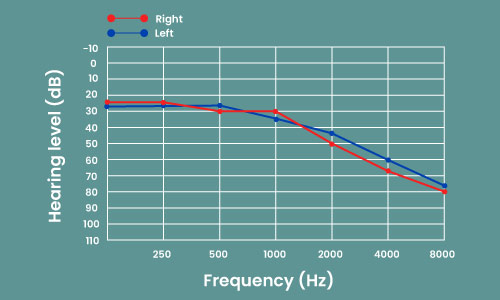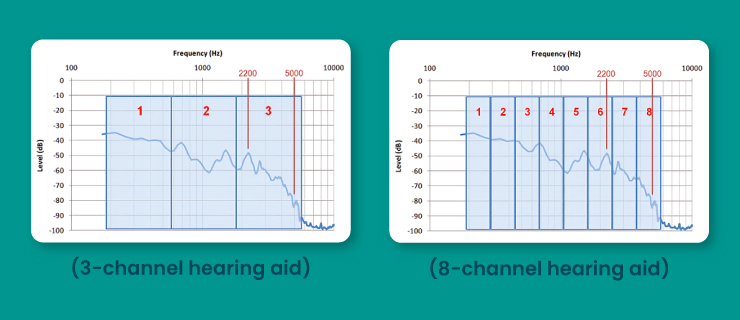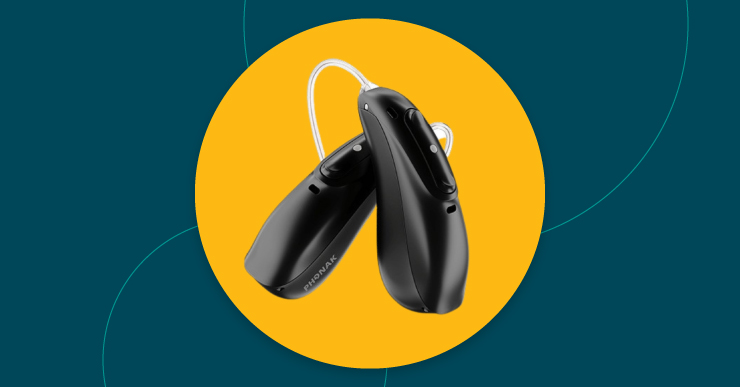The layperson often does not know what it means when audiologists discuss “channels” in digital hearing aids. Or when family members are reading articles online mentioning hearing aids channels.
What are Channels in Hearing Aids?
Hearing aids use channels to improve sound processing by separating the frequency range into different sections. This allows for better differentiation between speech and noise and the application of varying amplification levels to each channel. It enables hearing aids to differentiate between speech and noise.
Channels are the basic technology that makes a digital hearing aid as interesting as it is. A channel can be defined as a filter that holds the door for different ranges of frequencies. Simply put, channels break down a frequency into tiny fragments of input signals so that once the audiogram has been taken, the digital hearing aid can provide the requisite amount of amplification in each frequency.
Have higher channels is especially important in the below usage scenarios:
1. Patients with sloping hearing losses – i.e., the hearing loss increases as you increase frequencies. An example of a sloping hearing loss is shown in the image.

2. Patients who need additional filtration of speech in noise.
The below graphics indicate how sound is divided-up in a 3-channel hearing aid and an 8-channel hearing aid.

Channels, however, tend to be discussed more liberally than they should. Differences in modern digital hearing aids go much beyond channels. There are a host of other features in digital hearing aids which make them different from one another – for example, noise management, feedback management, directionality, connectivity, wind noise management, own voice management (occlusion), and many more.
The team at the Centre for HearingⓇ would be ideally placed to logically explain and recommend the right hearing aid for you or your loved one. Reach us at 9811227269 for questions or a free telephonic consultation.
Hearing Aids Channels and Their Importance

As mentioned earlier, additional channels contribute to a better hearing experience for the user with better sound and less noise since the digital hearing aid retains the original characteristics of the sound being processed. Considering the host of modern features, digital hearing aids are considered to be superior to other forms of devices. However, expert audiologists, including those at the Centre For Hearing®, have some more details to add.
A study on the effect of multichannel hearing aids on speech understanding supports that the relative benefit to the wearer is negligible once a hearing aid has more than 15 channels. One thing to note is that the wearers cannot tune the channels alone, and only a qualified audiologist conducts it after thoroughly examining the degree of hearing loss.
Significance Of Multi-Channel Hearing Aids

Every hearing loss is a unique case and needs individual attention. Only an expert audiologist can determine the extent of hearing loss after a series of preliminary tests. Once the degree of hearing loss is determined, they can prescribe the necessary multi-channel digital hearing aids.
Following are some of the crucial reasons why you should opt for multi-channel digital hearing aids:
1. More adjustment options
The increased number of channels implies an increased frequency fragmentation, enabling the audiologist to fine-tune the hearing aids to the wearer’s satisfaction. Hearing loss varies in terms of mild, moderate to severe. In such a scenario, the affected individual gets more options for fragmented sound signals to help them detect more precise sound signals.
2. Better features
As mentioned, the benefits of increased channels are not limited to their features, as they expand the benefits of multi-channel digital hearing aids. Hearing aids often come bundled with state-of-the-art technology like directional microphones that improve audible sound quality. Such directional microphones are also termed HD locators.
3. Increased ambient sound detection
More channels leave more room for fine-tuning the digital hearing aids. They are better equipped to simultaneously break down frequencies and filter unwanted sound signals. The result is a crystal-clear absorption and suppression of ambient sounds.
This also reduces incidents of wearers stumbling in a crowded area due to poor ambient sound detection. Multi-channel digital hearing aids thus improve quality of life by enabling wearers to listen to nature’s beautiful soundscape.
4. Effective noise reduction
Some hearing aids are prone to excessive feedback and cause irritation. Multi-channel digital hearing aids pave the way for audiologists to tune the frequencies to seamlessly eliminate noise and excessive feedback. This hearing aid is also highly sensitive to suppress unwanted noise and amplify much-needed sound signals once unheard by the wearer.
5. Reduced stress on ears
Few channels mean fewer options to get the desired sound input to the ears. This creates a bigger room for noise and unwanted signals to bombard the ears.
On the flip side, fewer channels mean that hearing aids won’t be able to convey necessary sound signals to the ears. Consequently, it increases pressure on the auditory system to compensate for the lack of essential sounds, negatively impacting the ears of the individual and ultimately beating the purpose of hearing aids. In contrast, a multi-channel hearing aid eliminates unwanted stress on the ears.
The various benefits and aspects of multi-channel hearing aids may feel overwhelming. The decision, however, is not to be made by the wearer alone. You need an expert audiologist to walk you through the initial stages of recommending an appropriate hearing aid.
Channel Comparison Across Top Hearing Aid Brands (2025)
Each manufacturer has a very different philosophy towards channels. This makes it hard to differentiate them across brands. In example:
1. Signia (formerly Siemens Hearing)
- Entry-level (Intuis 3 BTE): Starts with 12 channels, approx. ₹25,990.
- Premium (Signia IX Charge&Go series): Go up to 48 channels, priced ₹1,14,990 per unit.
- Android/iOS compatibility.
2. Widex (WSA Group)
- Offers a maximum of 15 channels in even their latest top-end Sheer hearing aid priced at Rs. 3,80,000 per unit.
- Prioritizes natural sound quality over high channel counts.
- Known for: PureSound™, ZeroDelay™ technology, and strong performance in music perception
3. Phonak (Sonova Group)
- Offers 12 channels (₹55,000–₹80,000).
- Premium models (Phonak Infinio, Lumity & Paradise) offer up to 20 channels (₹2.8–₹4.10 lakh per unit).
- Known for: AutoSense OS™, universal Bluetooth, and water-resistant models.
Note: More channels do not mean better performance. Look for other features as well, like speech enhancement, noise cancellation, and the audiologist’s tuning expertise.
Centre For Hearing®: Trusted Guide In Hearing Loss Journey
At Centre For Hearing®, we lead the charge against hearing loss through our extensive network of 50+ clinics spread across key locations in India, including Delhi/NCR, Chandigarh, Maharashtra, Bihar, Jharkhand, and Punjab. Our commitment to superior hearing care is backed by cutting-edge equipment and the expertise of top-tier professionals in the field.
Discover a comprehensive range of hearing aid channels, all available within our clinics. With a steadfast commitment to patient-centric care, we advocate a brand-agnostic approach, ensuring that we prescribe the most suitable and budget-friendly hearing aids tailored to individual needs.
Additionally, our dedication extends beyond the clinics with a free helpline, entirely devoted to addressing any queries related to hearing concerns.
For personalized assistance or to explore our offerings, reach out to us at +91 9811 227 269.


















